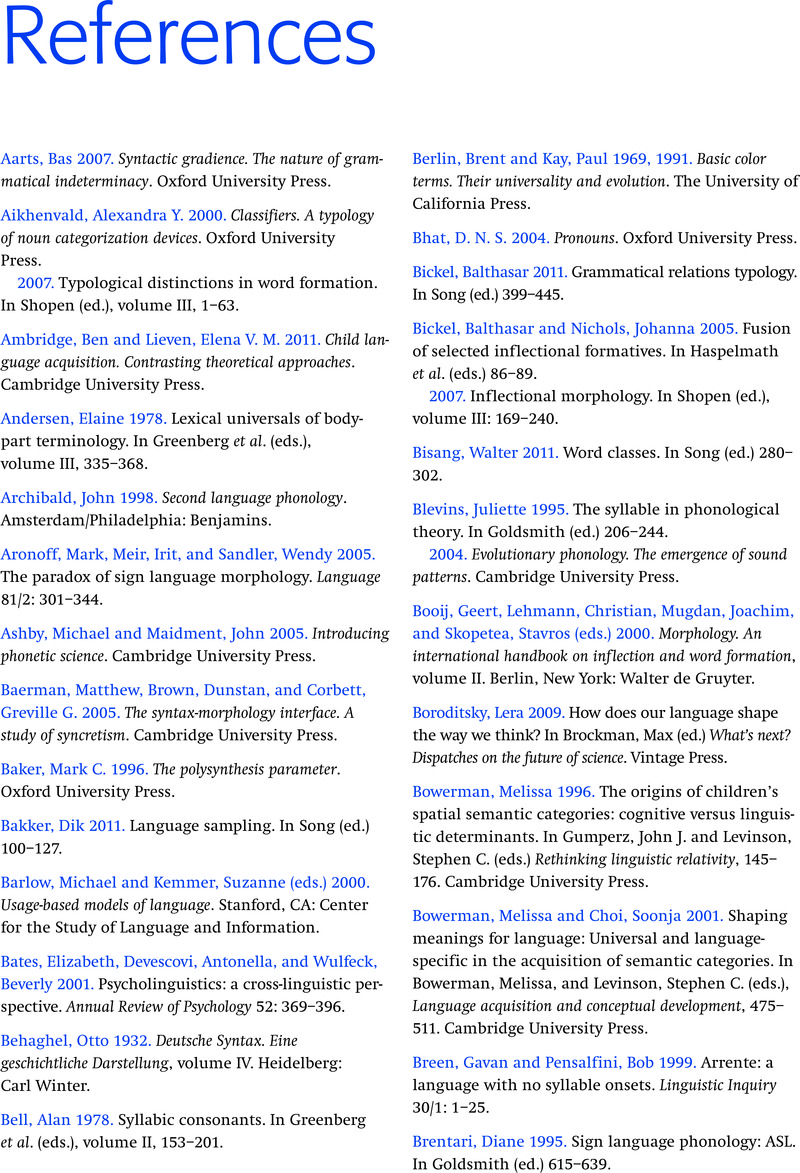Book contents
- Frontmatter
- Contents
- List of figures
- Preface
- List of copyright permissions
- List of abbreviations
- Chapter 1 What is language typology?
- Chapter 2 The worlds of words
- Chapter 3 Assembling words
- Chapter 4 Dissembling words
- Chapter 5 The sounds of languages
- Chapter 6 Language in flux
- Chapter 7 Explaining crosslinguistic preferences
- List of languages mentioned
- Glossary
- References
- Subject index
- Language index
- Author index
- References
References
Published online by Cambridge University Press: 05 February 2013
- Frontmatter
- Contents
- List of figures
- Preface
- List of copyright permissions
- List of abbreviations
- Chapter 1 What is language typology?
- Chapter 2 The worlds of words
- Chapter 3 Assembling words
- Chapter 4 Dissembling words
- Chapter 5 The sounds of languages
- Chapter 6 Language in flux
- Chapter 7 Explaining crosslinguistic preferences
- List of languages mentioned
- Glossary
- References
- Subject index
- Language index
- Author index
- References
Summary

- Type
- Chapter
- Information
- Introducing Language Typology , pp. 283 - 294Publisher: Cambridge University PressPrint publication year: 2012



